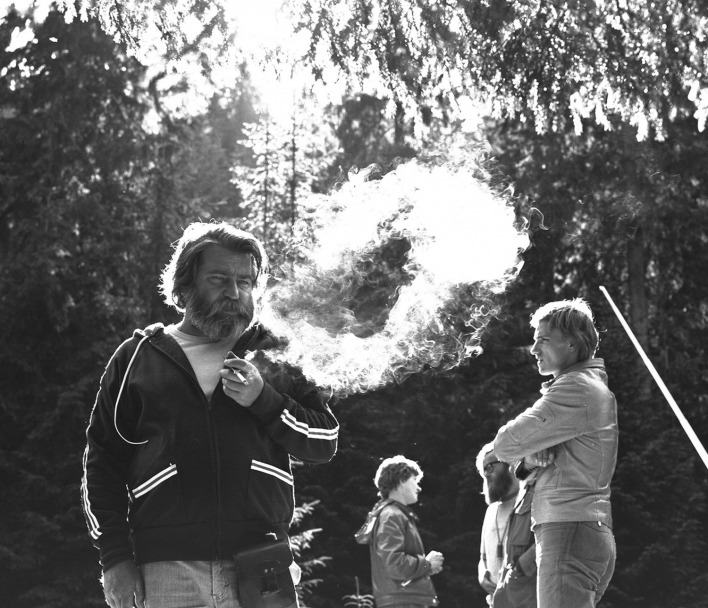On seeing a series of shots captured by Sára, one is immediately struck by the lyricism of the landscape and pulsation of history. No other Hungarian filmmaker can say as much about the history of Hungary through its landscape than Sándor Sára, Kossuth Prize laureate, director-cinematographer who turns 85 this year. Since the early 1960s, his films have concentrated on the man in the street totally at the mercy of the great socio-historical storms sweeping the country. In his pictures, not only are the vast geometrical extreme longshots of the landscape infused with a dark lyricism of injustice and tragedy, but the faces of people, too. The Hungarian landscape and history pulsated throughout Cigányok/Gypsies sparking the lyric documentary style of the 1960s, in the extreme long shots of the river Tisza without geometric sky in Current, the rows of houses and masses of people in Tízezer nap/Ten Thousand Suns, in the unscalable crags of 80 huszár/80 Hussars, in the dark rows of poplar in Feldobott kő/The Upthrown Stone and in the self-ironic landscapes of Szindbád. His films show faces filled with the same visual power: one can read the fate of Central-Eastern Europe in the expressions of figures in Gypsies, The Upthrown Stone or documentaries examining the dark corners of our history, Pergőtűz, Magyar nők a Gulágon/Hungarian Women in the Gulag and Te még élsz?/You’re Still Alive? Both the directorial and hugely multidimensional cinematographic art of Sára became outstanding elements of European film art, in the same way as István Gaál’s Sodrásban/Current, István Szabó’s Apa/Father and Tűzoltó utca 25./25 Fireman’s Street, Zoltán Huszárik’s Szindbád, Ferenc Kósa’s Ten Thousand Suns and István Gaál’s opera film Orfeusz és Eurydiké/Orpheus and Eurydice.



.png)






